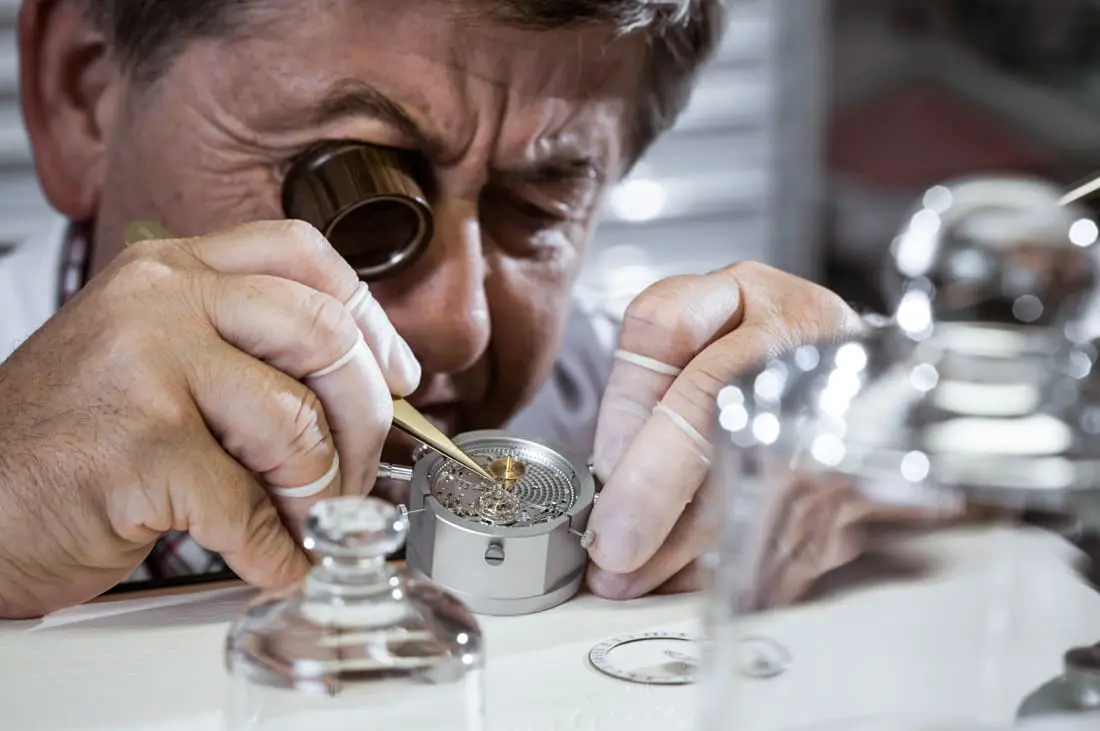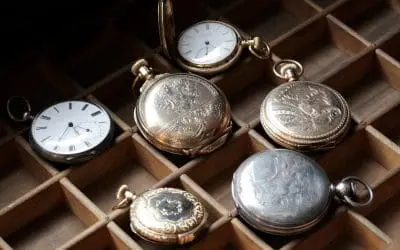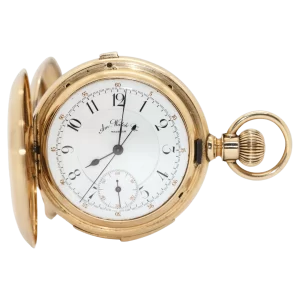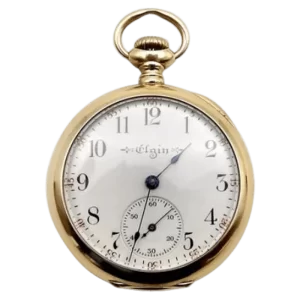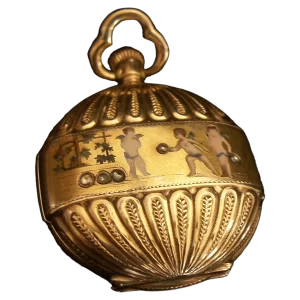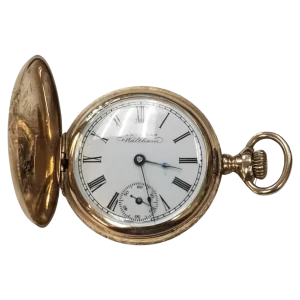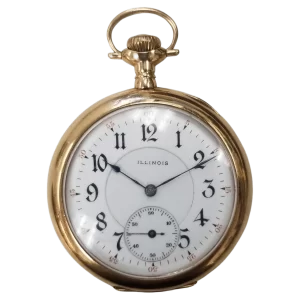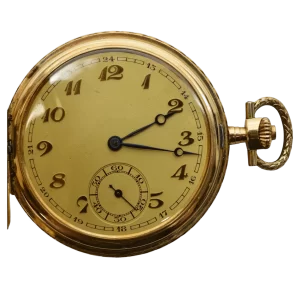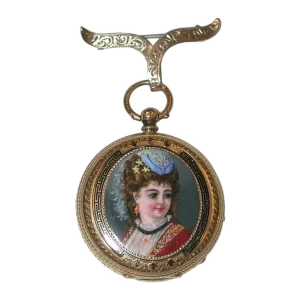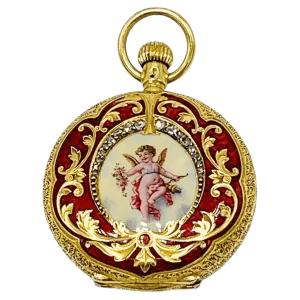Antique pocket watches have a timeless charm that captures the attention of watch collectors and enthusiasts. With intricate designs and skilled craftsmanship, these timepieces were once a symbol of status and wealth. Today, they represent a piece of history that can be preserved with the art of restoration. Bringing an antique pocket watch back to life can be a fascinating and rewarding process for both the owner and the watchmaker. In this blog post, we will explore the world of antique pocket watches and the importance of restoration in preserving their value and beauty.
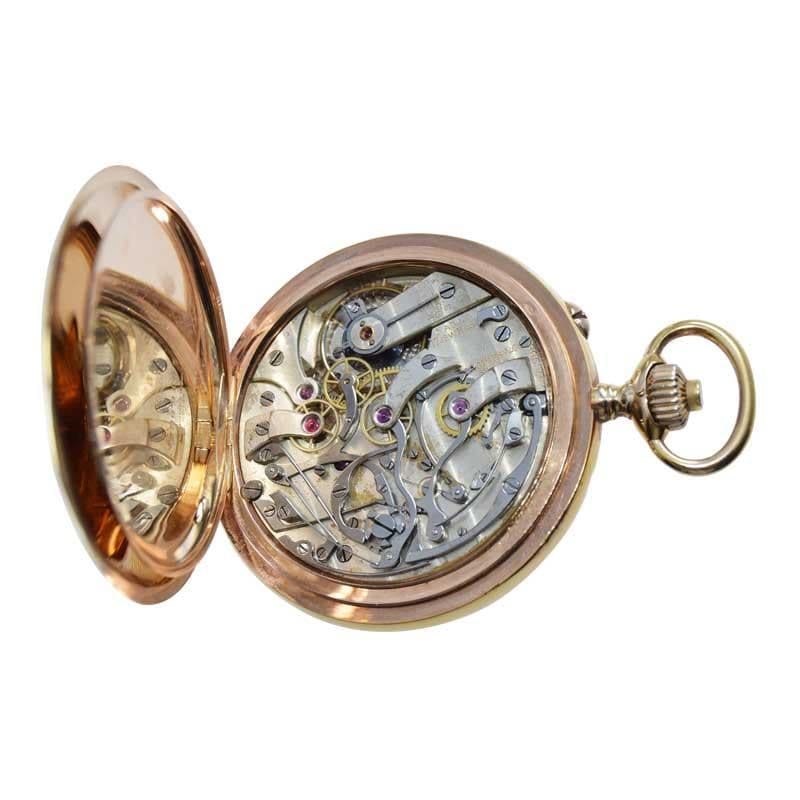
The Fascinating World of Antique Pocket Watches
Antique pocket watches have a rich history and are highly valued by collectors. These timepieces were the primary way of telling time before wristwatches became popular. Antique pocket watches often feature intricate designs, precision craftsmanship, and quality materials such as gold or silver. They were once a symbol of status and wealth and were often passed down through families as heirlooms.
The style, materials, and markings on an antique pocket watch can often help identify its age and origin. For example, a pocket watch from the 18th century might have elaborate engravings and a porcelain dial, while a 19th-century pocket watch might feature an ornate gold or silver case.
Antique pocket watches can tell us a lot about the history of watchmaking, from the evolution of timekeeping technology to changing fashion trends and cultural influences. They remain popular among collectors and watch enthusiasts today due to their durability, rarity, and unique charm.
Understanding the Importance of Restoration in Preserving Antique Pocket Watches
Antique pocket watches hold immense historical and sentimental value for their owners. They are a testament to the ingenuity and craftsmanship of a bygone era. Unfortunately, over time, pocket watches can deteriorate due to natural wear and tear, damage, or neglect. This is where restoration plays a crucial role in preserving antique pocket watches.
Restoration can bring an antique pocket watch back to its former glory
Restoration involves a series of processes that aim to revitalize an antique pocket watch back to its original condition. This can include repairing or replacing broken parts, cleaning the inner workings, and polishing or re-plating the exterior to restore its shine.
Restoration can prevent further deterioration of an antique pocket watch
Antique pocket watches are delicate instruments that require proper care and maintenance to function correctly. A restoration can address issues that may cause further damage, such as rust, corrosion, or misaligned parts. Expert watchmakers can diagnose and address these issues during the restoration process, prolonging the life of the antique pocket watch.
Restoration can increase the value of an antique pocket watch
A restored antique pocket watch can significantly increase its value, particularly if the restoration done correctly. A restored watch is more attractive to collectors, and the proper restoration process can preserve the authenticity that collectors and enthusiasts look for.
Restoration should be done by a professional watchmaker with expertise in antique watches
Restoration is a complex and delicate process that should only be carried out by a professional watchmaker with experience in working with antique watches. Expert watchmakers have the necessary tools and knowledge to perform restorations safely and accurately without damaging the antique pocket watch.
Restoration can involve cleaning, repairing, and replacing parts as needed
The restoration process can vary from pocket watch to pocket watch, depending on the condition and requirements of each antique piece. The restoration may involve cleaning the pocket watch’s interior and exterior, analyzing the movements and mechanisms, repairing broken or worn-out parts, or replacing missing pieces with authentic antique parts when necessary.
Overall, restoration is an essential process in preserving the history and heritage of antique pocket watches. It not only gives antique pocket watches a new lease of life but can also make them more attractive and valuable to collectors. If you possess an antique pocket watch that needs restoration, do not hesitate to contact an expert watchmaker with expertise in restoring antique pocket watches to help bring it back to its former glory.
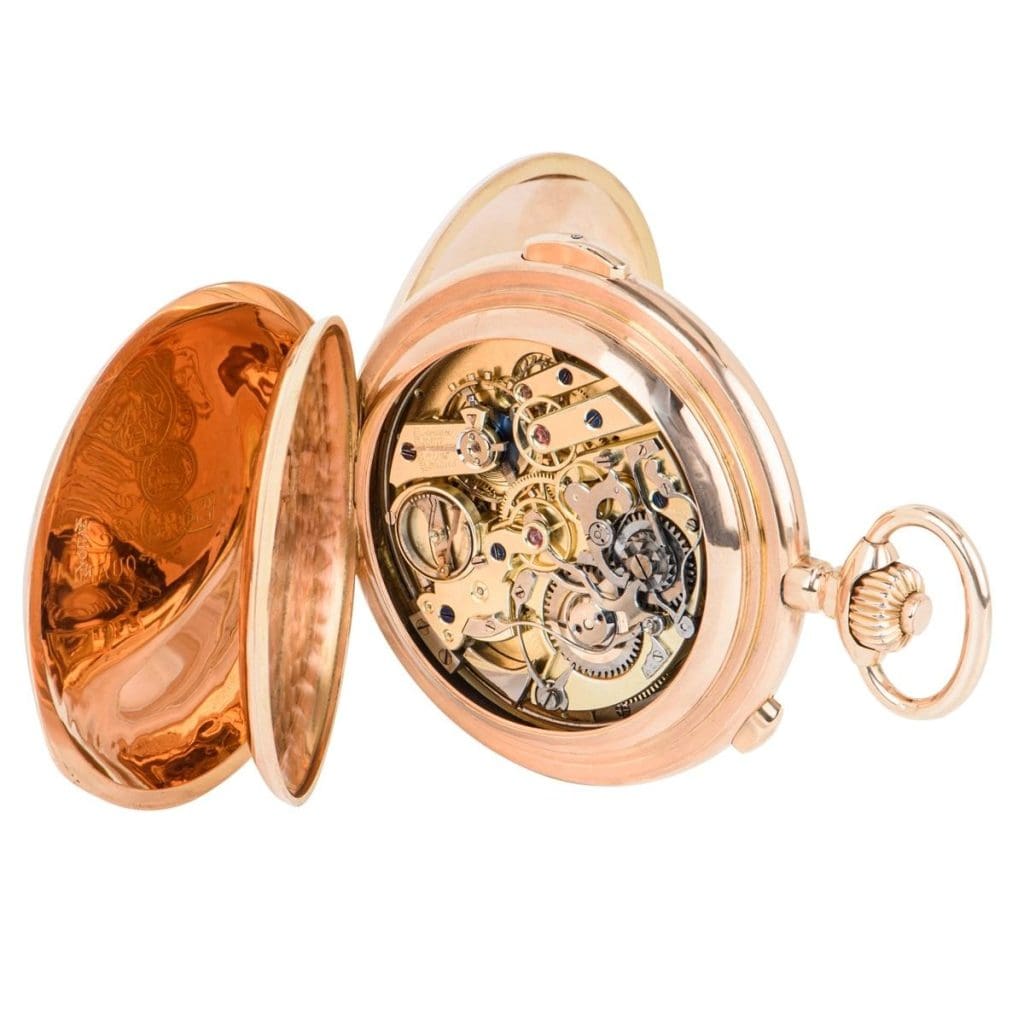
Restoration Techniques Used by Expert Watchmakers
Expert watchmakers use a variety of techniques to restore antique pocket watches to their former glory. These techniques often require specialized tools and extensive knowledge of both the watchmaking craft and the specific timepiece being restored.
Creating Replacement Parts Using a Lathe
One technique used by expert watchmakers is the creation of replacement parts using a lathe. This requires careful measurements and precision, as the new part needs to fit seamlessly into the existing watch. The lathe creates a perfect shape for the new part, which can then be fitted onto the watch.
Polishing
Polishing is another common restoration technique. Old pocket watches can accumulate dirt, grime, and scratches over time, which can make it difficult to read the time and detract from the watch’s overall appearance. Expert watchmakers can carefully polish the watch’s surface to remove these imperfections and restore the watch’s original shine.
Re-plating and Re-enameling
Some antique pocket watches may have lost their plating or enamel due to wear or age. In these cases, restoration may involve re-plating or re-enameling the watch. This technique can restore the watch’s original appearance and prevent further deterioration.
Disassembly and Reassembly
Restoration often involves disassembling the watch into its various parts to allow for repairs or cleaning. Expert watchmakers have the necessary knowledge and expertise to carefully disassemble and reassemble the watch while minimizing the risk of damage or error.
Extensive Repair Work
Some antique pocket watches may require extensive repairs to restore them fully. This can include replacing damaged or worn-out parts or repairing damage to the watch’s mechanism or casing. Expert watchmakers can perform these repairs with precision and care, ensuring that the watch is returned to its original condition as much as possible.
Sourcing Antique Parts for Restoration Projects
Finding the right antique parts is crucial for a successful restoration project of an antique pocket watch. Here are some tips for sourcing antique parts:
- Check with watchmaker associations or vintage watch dealers for antique parts.
- If you can’t find the part you need, consider having it custom-made to fit your specific antique pocket watch.
- Be sure to use authentic antique parts to preserve the value of the restored watch.
- Experienced watchmakers may have connections to antique parts suppliers and resources.
Restoring an antique pocket watch can be a challenging but rewarding experience. With the right tools, techniques, and antique parts, an expert watchmaker can bring an antique pocket watch back to its original glory and increase its value for collectors.
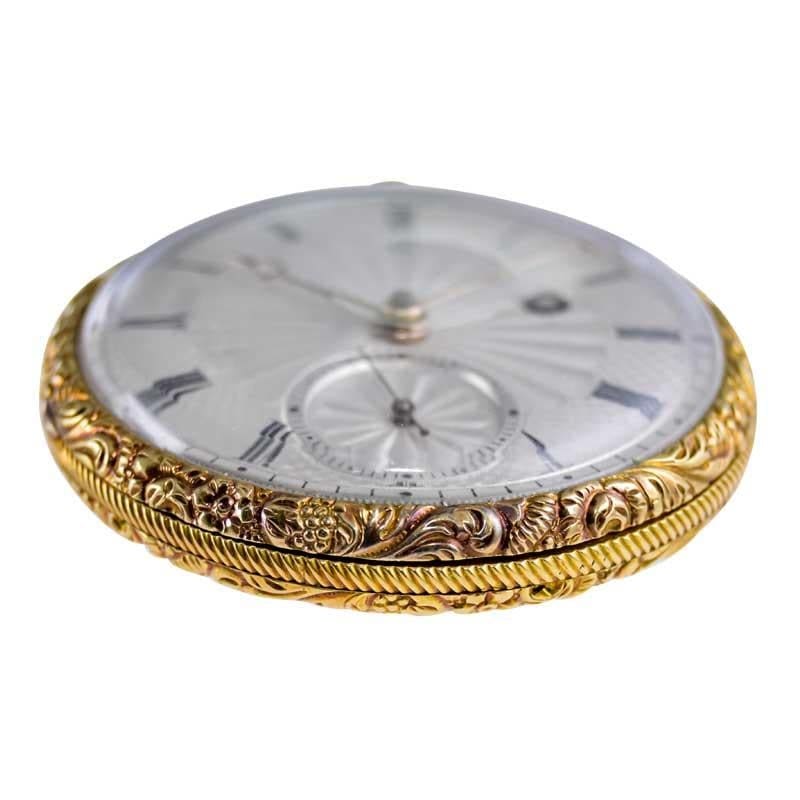
Caring for Your Restored Antique Pocket Watch: Tips and Maintenance
After investing time and resources into restoring your antique pocket watch, it’s important to take proper care of it to ensure longevity. Here are some tips on maintaining your restored antique pocket watch:
Handle with Care
Antique pocket watches are delicate and can be easily damaged if mishandled. When handling your restored antique pocket watch, be mindful of how you hold it and avoid dropping it.
Regular Maintenance
Regular maintenance is key to preserving the functionality of your restored antique pocket watch. Have your watch serviced by an expert watchmaker periodically. Cleaning and oiling is also essential for keeping your watch in top condition. However, be cautious about using cleaning solutions as some may harm the watch’s delicate parts.
Storage
Storing your antique pocket watch properly is also important in preserving its condition. Keep it in a protective case or pouch when not in use. Avoid exposing it to extreme temperatures or moisture which can lead to rust, corrosion, or other damage.
Winding
When winding your antique pocket watch, take care not to over-wind it. Over-winding can lead to damage to the watch’s internal components. Wind the watch slowly and stop once you feel resistance to avoid over-winding.
Expert Help
If you notice any issues or problems with your restored antique pocket watch, seek help from an expert watchmaker. Attempting to fix problems on your own may lead to further damage.
By following these tips, you can ensure that your restored antique pocket watch remains in top condition for years to come.
Conclusion
Restoring antique pocket watches is a fascinating and rewarding process that requires great skill and expertise. Antique pocket watches have a rich history and are valued by collectors for their unique designs, craftsmanship, and historical significance. Restoration is important in preserving these timepieces and can increase their value. With proper care and maintenance, a restored antique pocket watch can last for generations to come. If you have an antique pocket watch that needs restoration, be sure to seek out an experienced and skilled watchmaker who specializes in antique watches to ensure the best results.

